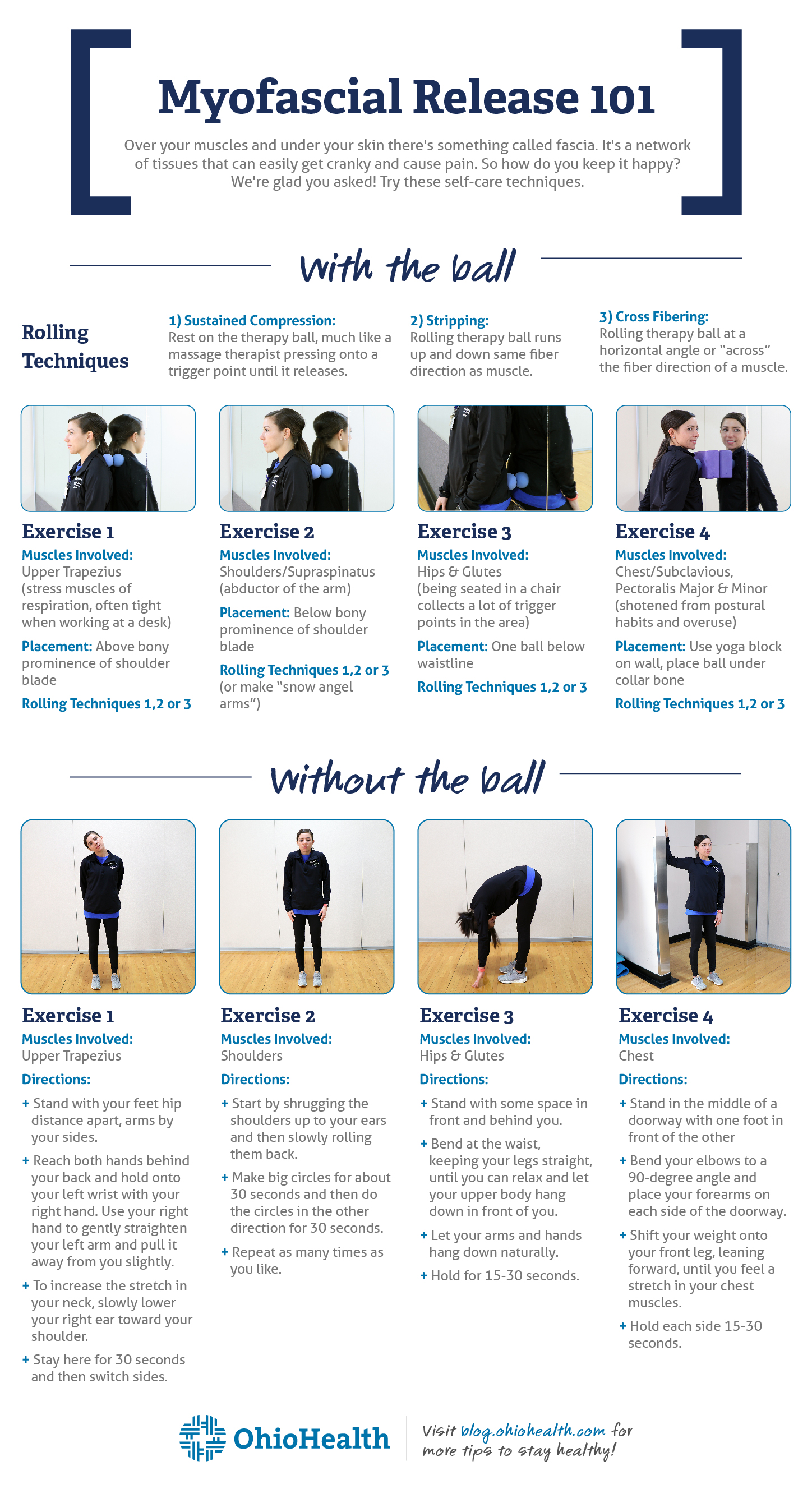
Did you know your body is wrapped in something called fascia? It’s there, under your skin and over your muscles, and it can get cranky if you don’t treat it right. Thankfully, if your fascia gets locked up, there are ways to relieve it, including myofascial release.
What Is Myofascial Pain?
Fascia is connective tissue that covers your muscles. Healthy fascia moves and stretches easily. Injured fascia becomes tight and rigid — causing pain and stiffness, called myofascial pain.
Strangely enough, the area that hurts sometimes is not the spot of the actual injury. “Trigger” or “tender” points feel like small knots in the muscle. When you push on them, you typically feel pain on that spot, but also in other areas of your body — this is known as referred pain. For example, you may have a trigger point near your knee, but feel pain and stiffness in your upper thigh.
When the symptoms last more than a few weeks, it’s called myofascial pain syndrome (MPS). This is a chronic, painful condition that may require help from a doctor or physical therapist.
What Causes Myofascial Pain?
Things that can cause myofascial pain include:
- Overuse of certain muscle(s) from repetitive motions
- Injury or trauma, such as a car accident
- Emotional trauma or chronic stress
- Inflammation
- Poor posture
What Is Myofascial Release?
Myofascial release, or MFR, is a way to treat trigger points. It’s meant to increase range of motion and decrease pain. It works by applying gentle, sustained pressure directly on the injured fascial tissue to help it “release” and lengthen.
Physical therapists, chiropractors, osteopathic doctors and massage therapists are the experts you can turn to for MFR. However, there are also some techniques you can do on your own to keep your fascia pliable.
All you need are two therapy balls, like these from Amazon, and a sturdy wall. Check out the infographic above to learn self-myofascial release techniques. And remember, using two balls at once is less intense than using only one.





